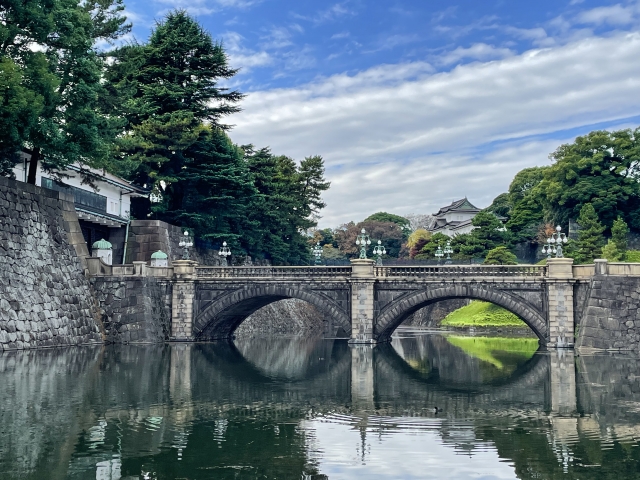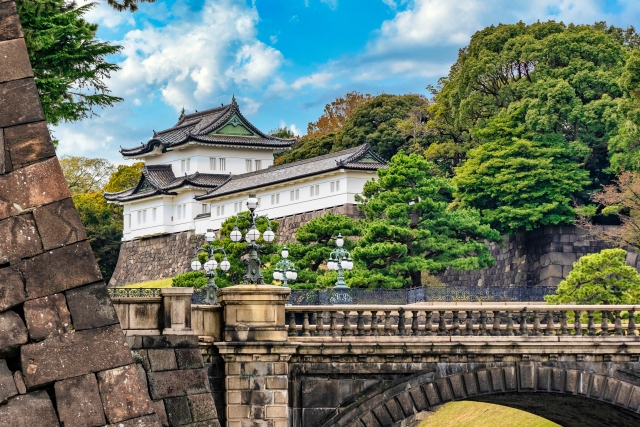Nestled in the very heart of Tokyo, the Imperial Palace is not just the residence of Japan’s Emperor but also a place where history, culture, and natural beauty intertwine. For travelers, a visit here offers a rare chance to step into the legacy of Japan’s imperial past while enjoying peaceful gardens and stunning city views.
The Imperial Palace in Tokyo is the residence of Japan’s Emperor, surrounded by beautiful gardens and rich history in the heart of the city.
A Symbol of Japan’s History and Tradition

Right in the center of one of the busiest cities in the world lies a place of peace, history, and tradition: the Imperial Palace, known in Japanese as Kōkyo. It serves as the official residence of the Emperor of Japan and symbolizes the country’s long history and continuity. For travelers, it offers a rare opportunity to experience a site that connects Japan’s feudal past with its modern identity.
From Edo Castle to Imperial Palace
The palace grounds once housed Edo Castle, the seat of the Tokugawa shogunate from the 17th to the 19th century. When the Meiji Restoration began in 1868, political power returned to the Emperor, and the castle became the Imperial residence. Although many original castle structures were lost to fire and war, the palace today retains impressive stone walls, moats, and gates that transport visitors back to Japan’s samurai era. Walking here is like stepping into a living museum surrounded by the energy of modern Tokyo.
First Impressions: Nijūbashi and the Moat
For most visitors, the first view of the palace is the Nijūbashi Bridge. This elegant double-arched bridge, reflected in the calm water of the moat, is one of Tokyo’s most photographed landmarks. The sight of traditional architecture framed by modern skyscrapers perfectly captures Tokyo’s unique mix of old and new. Even though the inner grounds are usually closed to the public, standing here gives travelers a sense of the palace’s grandeur and importance.
The East Gardens: A Public Treasure
One of the most popular areas for sightseeing is the Imperial Palace East Gardens (Higashi Gyoen). Open to the public free of charge, these gardens occupy part of the former inner castle grounds. Visitors can wander through wide lawns, seasonal flower beds, and the remains of stone foundations from Edo Castle. Cherry blossoms in spring, fresh greenery in summer, and red maple leaves in autumn all make the East Gardens worth visiting in every season. For those seeking a peaceful break from Tokyo’s busy streets, this is the perfect retreat.
Kitanomaru Park and Surrounding Attractions
To the north lies Kitanomaru Park, once part of the castle’s defenses. Today, it is home to the Science Museum and the National Museum of Modern Art, Tokyo, making it a cultural hub as well as a green space. Families, students, and tourists alike enjoy spending time here. Just outside the palace grounds, the Marunouchi district and Tokyo Station offer modern architecture, shopping, and dining—an exciting contrast to the tranquility within the palace walls.
Special Occasions: A Glimpse Inside
Normally, the inner grounds of the Imperial Palace are closed to the public. However, there are two days each year when visitors are allowed inside: January 2 (New Year’s Greeting) and February 23 (the Emperor’s birthday). On these days, members of the Imperial Family appear on a balcony to greet well-wishers. Thousands of people gather for these events, creating a festive atmosphere unlike any other. For the rest of the year, visitors can apply for guided tours through the Imperial Household Agency. While the tours do not enter the palace buildings, they provide fascinating insights into the site’s history and layout.
A Living Contrast of Past and Present
What makes the Imperial Palace truly special is its balance of history and modernity. Ancient stone walls rise beside glass skyscrapers, joggers circle the palace moat in the early morning, and office workers relax under pine trees during lunch breaks. The palace is not just a historic site but also part of Tokyo’s daily rhythm. This living contrast is something that makes a visit unforgettable.
Nature in the Heart of the City
Beyond its cultural importance, the palace grounds are a natural sanctuary. Seasonal flowers, pine trees, and wide green lawns provide a home for birds and wildlife. In spring, the cherry blossoms draw huge crowds; in autumn, the fiery red and orange leaves attract photographers from around the world. Even in winter, the crisp air and evergreen trees create a calming atmosphere. It is hard to believe such a peaceful natural space exists right in the middle of Tokyo.
Practical Tips for Visitors
The Imperial Palace is conveniently located within walking distance from Tokyo Station, making it easy to visit. Entry to the East Gardens is free, but they are closed on Mondays and Fridays, so checking the schedule in advance is important. The Outer Gardens (Kōkyo Gaien), with their wide gravel plazas and pine trees, are always open and provide excellent views for photos. Comfortable walking shoes are recommended, as the grounds are large and include gravel paths.
Conclusion: A Must-See in Tokyo
Visiting the Imperial Palace is more than just a sightseeing stop—it is a journey through Japan’s history, culture, and nature. From the majestic Nijūbashi Bridge to the quiet beauty of the East Gardens, every corner of the palace grounds offers a glimpse of the country’s soul. Whether you are fascinated by history, enchanted by seasonal landscapes, or simply looking for a peaceful escape from Tokyo’s fast pace, the Imperial Palace is a destination that should not be missed.



comment